

Aizome: Japan’s Hues of Blue
|
Have you heard of “Japan Blue?” It actually refers not to one particular shade, but to various hues of blue – specifically, hues that can be achieved through the unique Japanese method of indigo dyeing. This traditional process of indigo dyeing is known as aizome (藍染め). In Japan, indigo dye is obtained from the Japanese Indigo plant, a type of knotweed. Traditional methods to extract the indigo pigment from the plant require its soft, dark green leaves to be dried and fermented to make a substance concentrated with dye known as sukumo (蒅).
Sukumo is then mixed with other substances and left again to ferment in vats; after a few months of careful fermentation in a moist and warm environment the dye is ready to use. Fabric is dipped into the vat and left to air-dry. Though seemingly yellow at first, oxidation will soon turn the colour of the fabrics a glowing indigo blue. Craftsmen can dye these fabrics repeatedly to achieve darker shades of blue. It is this process of indigo dyeing that is known as aizome. The indigo dyeing industry thrived especially during the Edo period. Then, cotton was the primary material used to make clothing. Silk was expensive and reserved for nobles, and as such, commoners turn to cotton to clothe themselves. However, cotton could only be coloured by few dyes, one of them being indigo. The natural compounds of the dye also meant that it could repel insects, making indigo blue yukata in summer exceptionally popular. The dyeing technique was also used to manufacture household items like futon, bedding, and furoshiki cloths. So pervasive was the colour throughout towns in Japan that it was dubbed “Japan Blue” by the first overseas visitors to Japan during the Meiji Period. |
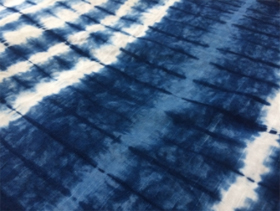 © photoAC 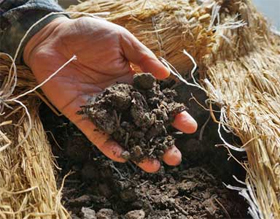 © Aizome Craft Gallery 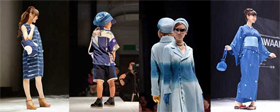 © AM MODEL AGENT |
|
As mentioned, aizome dyeing technique can be used to create various shades of blue. Some of these shades have special terms. The dark shade of navy blue that is closest to black is known as noukon (濃紺), while asahanada (浅縹) is used to describe a light indigo. Aijiro (藍白) is used to refer to the lightest shade of blue achievable with aizome, and is also the colour of the iconic Tokyo Sky Tree.
Various other dyeing techniques such as shibori (‘絞り’, a resist dyeing technique which requires manual actions like squeezing and wringing) and tsutsugaki (‘筒描’, a technique of resist dyeing using rice-paste), can be combined with aizome to create stunning patterns. While shibori techniques can yield lively swirls and charming stripes, tsutsugaki techniques can be used to create intricate drawings of flowers and animals. With the introduction of synthetic dye, the popularity of aizome has waned slightly. However, the long history of aizome has upheld it as an important traditional craft in Japan. A number of specialised makers and designers remain, spearheading campaigns to revitalise the industry, and to make aizome products trendy again. Because of the various shades this dyeing technique is able to create, fashion designers have used it to make chic and modern clothes like dresses, ties, and coats. Its insect repellent properties have also made it a popular way to colour children’s clothing, such as hats and shirts. Even accessories can be dyed using aizome, with some ateliers in Japan selling offering jewellery with gleaming pearls that have been dyed a gentle blue. The next time you visit Japan, keep an eye out for these vivid hues of blue. With diverse possibilities available, you may even get to bring a piece of “Japan Blue” home with you. |
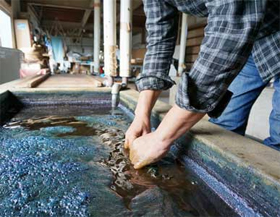 © Aizome Craft Gallery 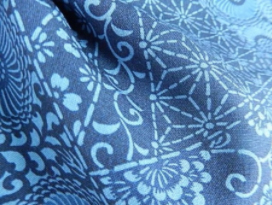 © photoAC 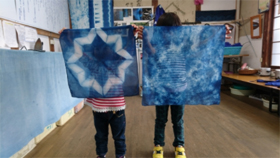 © photoAC |
Resources
|
Aizome, the "Mystical Japan Blue". (2015). Retrieved 19 August 2020, from https://japan-magazine.jnto.go.jp/en/1505_aizome.html |
|
Japan Creative Centre 4 Nassim Road, Singapore 258372 +65 6737 0434 / jcc@sn.mofa.go.jp https://www.sg.emb-japan.go.jp/JCC/ Nearest parking at Orchard Hotel & Delphi Orchard |
 |